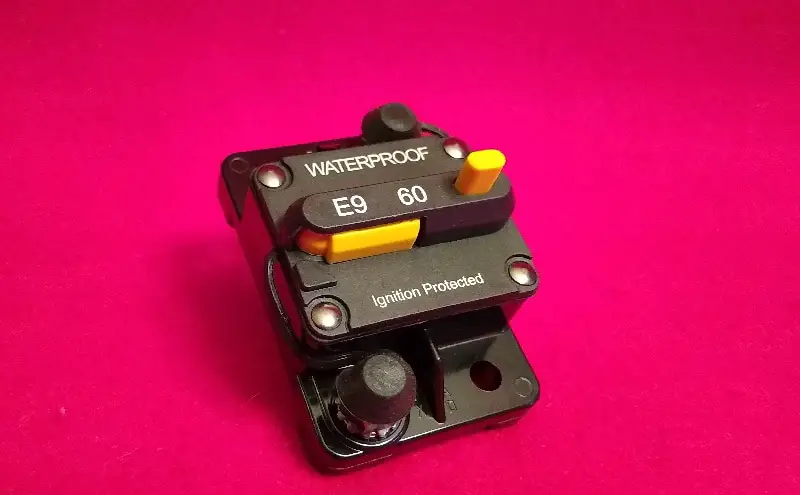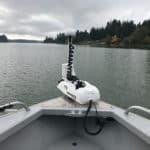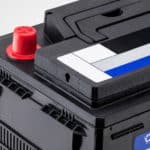Boat electrical systems are complicated. Therefore, the U.S. Code and Federal regulations talk about various aspects of electrical systems in a detailed manner. At the same time, they consider stipulate safety requirements. It all ensures good practice.
The U.S. Coast Guard Requirements seek to reduce the risk of property damage, injuries, and deaths linked with recreational boating, fishing, maritime transportation, and other water-related activities. So, whether you prefer being a passenger or own a boat, it is crucial to understand the requirements and the laws of recreational boating.
You have a lot of legal responsibility while cruising the waters. And unawareness of the law is not the way out. Take out some time to know what you need when on board. It will save you a lot of money, and in some cases, even your life.
Note: Dctrolling motor has sourced this information from U.S. Coastguard code publications and ABYC standards at the time this article was written, Please check for updated information.
Electrical System Regulations and Standards
Electrical system regulations apply to any boat. It can be a large boat with a gasoline engine for mechanical or electrical propulsion. So, if a gasoline engine works as a generator on a stern inboard-outboard or an inboard, it is required to meet specific standards.
Some requirements apply specifically, but many interact with other aspects like overcurrent protection and wire size determination. These requirements may be confusing for a layman reading the regulations. Therefore, we have summarized all the essential provisions in this article:
Ignition Protection
Electrical equipment in a boat must have ignition protection. However, this rule does not apply to components that are separated from gasoline sources. These include tanks, engines, vent lines, fill lines, connections, etc.
There are different ways to isolate the electric component:
- Special enclosures or deck
- Bulkheads
- Installing it, minimum two feet away from the fuel source, in an open space
Ignition protection will ensure that the component
- Will not catch fire due to the hydrocarbon surrounding the equipment when a source of ignition causes an explosion inside, or
- Does not release sufficient thermal or electrical energy to ignite the flammable hydrocarbon mixture, or
- Has the ignition source hermetically sealed.
Grounding
If your boat has multiple gasoline engines, there should be a connection between the grounded engine-cranking motor circuits. A common conductor circuit should be used for this purpose. So, it can carry the supply current of each motor circuit. It can be a circuit made of jumper conductors, and may also have a common bus bar. This is in addition to the negative battery cables that generally go to an engine.
The purpose of this regulation is to ensure the safe supply of current. It helps prevent battery supply current from running through the fuel lines and smaller conductors inside the engines.
The grounded starter motor circuit can accidentally break due to vibration, corrosion, etc.. As a result, the cranking motor current may burn up instrument wiring (or other smaller conductors). It even melts fuel lines. Both hazards could cause explosions and fire accidents.

Batteries
It is essential to restrain the batteries to prevent them from moving around.
The battery will get damaged if it is allowed to move indiscriminately by the forces that result from operating the vessel (particularly smaller ones with faster motion) in waves or transporting it overland.
If the casing of the battery ruptures, it will cause the electrolyte to run out. If the terminal gets loose, sparking due to poor contact could occur. Moreover, sulfuric acid makes up the electrolyte. And it can severely damage most metals and many other materials. It can cause fittings and fuel lines to leak fuel and fail.
Movement can also result in contact between the terminal of the battery and grounded items, thereby causing sparking. Therefore, it is vital to install the battery in a way that prevents metallic objects from coming into contact with the ungrounded terminals. You can either place a rubber boot on the terminals or put the battery in a container with a lid.
Leaving an ungrounded terminal exposed can result in an accidental contact to the ground.
Dropping or using tools nearby while engine servicing can also result in such contact. This contact can cause a spark with enough energy to start a fire or ignite explosive gases that might be there.
Each metallic fuel system component and fuel line installed above the horizontal plane, and within 12 inches of the top surface of the battery must be isolated with a dielectric material.
Metallic fuel components are generally grounded. So, if there is an unshielded line above the battery, it may result in a short while removing or installing the battery.
No battery should be right below or above a fuel line fitting, fuel filter, or fuel tank.
Some fuel system components are significant sources of possible leakage. These include fuel filters, fuel line fittings, and fuel tanks.
Most fuel filters have drain plugs. Therefore, if you install the battery directly below these components, it increases the likelihood of gasoline leaking on the battery. It might damage its case material. On the other hand, if you install the battery directly above these items, the leaking electrolyte might damage the components of the fuel system. It can cause fuel leakage.
Servicing of the fuel system with a battery installed directly above/below it is also of enormous concern. Short-circuiting might occur while installing/removing the battery or servicing. It is important to note that this regulation does not forbid installing a battery directly above/below an uninterrupted fuel line. However, you must dielectrically shield a metal line if it is less than 12 inches away from the battery’s top surface. (As mentioned above)
There must be a vent system to allow the discharge of hydrogen gas from the boat as it gets released by the battery. This also applies to sealed batteries like Gel and AGM.
Hydrogen is a very explosive gas. You must avoid battery installations and boat design that enables hydrogen gas accumulation. It is because batteries release hydrogen gas. This gas disperses rapidly and seeks to get out through any cavity. Since it is lighter than air, overhead openings are a good idea. You must vent any pockets that could trap hydrogen gas. Similarly, it is also important to vent the battery container that jackets the battery.
The terminal connector should not rely on spring tension for a mechanical connection to the battery terminal.
A battery terminal connector’s integrity is crucial to avoid overheating and sparking. A failed battery terminal connection may create an explosion and fire hazard. Therefore, the regulations restrict the use of spring-type connectors. Instead, you should go for mechanical connections that are less likely to loosen because of vibration.
Conductors
All conductors should be stranded, insulated copper.
There are minimum wire sizes that are mandatory. In the regulations, there is a table with various values according to the wire’s insulation temperature rating. Most boat cables have a rating of 105 degrees Celsius.
The table also shows how the value for permissible current allowed derates for any specific wire in case of multiple, bundled-up wires. It is due to wires getting hotter when packed together. Due to the fixed insulation rating of the wire, the value of current allowed decreases when many wires are in a bundle.
According to the regulations, a wire’s minimum size should be 16 AWG. However, there are certain exemptions to this rule. You can find the specifications for permissible wires in the regulations. There are also example calculations and detailed guidelines on how to choose a suitable wire depending on the particular application.
Special laws apply to ignition system conductors. There should be active measures to protect conductors passing through bulkheads from abrasion. You must also protect exposed positive terminals using a boot etc. to prevent short circuits.
Click here for our article Best gauge wire for a 24 volt trolling motor?

Circuit protection
A trip-free, manually reset fuse or circuit breaker should be used to protect all ungrounded conductors carrying a current. Its placement should be at the power source for each conductor or circuit except:
- If setting up the fuse or circuit breaking at the power source is physically impractical. You may place it within 7 inches of the power source for each conductor or circuit, measured along the length of the conductor.
- If placing the fuse or circuit break within or at seven inches of the power source is physically impractical, you may put it within 40 inches of the power source for each conductor or circuit.
There are some notable exceptions. For more details about them, go through the regulations. They also explain the above in detail using numerous drawings. You will also find a section that describes what value of the circuit protection device is allowed in relation to the wire’s current-carrying capacity.
Circuit protection equipment should have a suitable voltage rating for their respective circuits.
All ungrounded supply conductors should have a trip-free, manually reset fuse or circuit breaker, unless the output conductor is connecting the battery’s primary power feed circuit to the engine-cranking motor. The fuse or circuit breaker should be under 72 inches (measured along the length of the conductor) of the storage battery. However, this does not apply to boats built before 1st August 1985 because they have a switch on the circuit to disconnect the battery.
All ungrounded supply conductors connected to a generator or alternator should have a fuse or circuit breaker with a rating of not more than 120% of the generator/alternator’s maximum rated current at a temperature of 60 degrees Celsius. This does not apply to self-limiting generators or alternators.
American Boat and Yacht Council
The American Boat and Yacht Council (ABYC) was formed in the mid-’50s. It is a result of the recreational boating boom at that time.
The Motorboat and Yacht Advisory Panel of the Merchant Marine Council founded the corporation. On 1st February 1954, they constituted it as a non-profit organization in New York.
Around 90 percent of boats are built according to ABYC Standards. The corporation sets requirements for the maintenance and safe construction of boats in the U.S. It is an American National Standards Institute’s standards development member.
A voluntary team of technical professionals runs this independent consensus-based organization. These include technicians, boat builders, engineers, boat/boat accessory manufacturers. And also, investigators and surveyors, dealers and retailers, designers and yacht brokers, law firms, marinas, boat owners, insurance companies, government agencies, and more. These experts work as a collective to create standards that ensure the safety of boaters.
Consider signing up for the email list and taking some classes on boat basics, click here to go to the ABYC home page.
To Sum Up
You probably do not think a lot about the possibility of a bad experience while going boating. Even if your boating experiences have been mostly positive, it is crucial to take precautionary measures.
As a boat owner, you are subject to the regulations the federal and state government has placed upon you regarding the operation of your boat. There are a lot of rules when it comes to electrical systems concerning the functioning of a boat.
And you may find it hard to go through each and every detail. But keep in mind, these regulations are for your good. They are necessary to follow if you want to avoid sparks, fires, and explosions. Make sure you thoroughly go through the U.S. Coast Guard requirements to ensure the electrical systems in your boat are hazard-free.
Dctrollingmotor wants you to have a good and safe trip, so helping you set up your boat system safely is our goal. Following all the electrical system standards mentioned in this article will ensure you do not encounter any problems during your outing.



